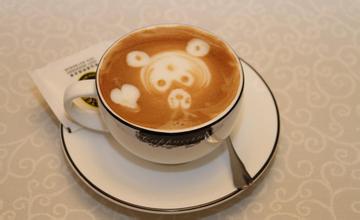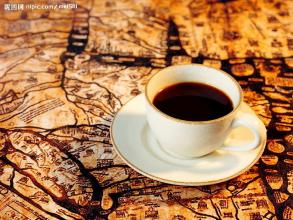Introduction of Flavor and Taste Coffee beans in Coffee production area of Valenford Manor, Jamaica
In 1717, King Louis XV of France ordered coffee to be grown in Jamaica. In the mid-1920s, Nicholas, governor of Jamaica, ordered coffee to be grown in Jamaica. Nicholas Lawes imported Arabica seeds from Martinique and began planting them in St. Andrew. To this day, St. Andrew's is one of the top three growing regions for Blue Mountain coffee in Jamaica, along with Portland and St. Thomas. Within eight years, Jamaica exported more than 375 tons of pure coffee. Coffee production peaked in 1932, harvesting more than 15000 tons of coffee.
The Government of Jamaica established the Jamaica Coffee Industry Board in 1950 to establish quality standards for Jamaica coffee and oversee the implementation of quality standards to ensure the quality of Jamaica coffee. The Commission awards a special official seal to Jamaica's exports of green and roasted coffee and is the world's highest national coffee authority. At present, the origin of Blue Mountain Coffee can be represented by Mafis Embankment Central Factory (M.B.C.E.), Blue Mountain Coffee Cooperative Factory (M.H.C.C.T.), Portland Blue Mountain Coffee Cooperative Plant (P.X.X.S.H.), Coffee Industry Association (Wallenford), Coffee Industry Association (St. John's Peak) and Blue (J.A.S.) 6 kinds of logo.
By 1969, the situation had improved, as Japanese loans had improved the quality of production and thus secured the market. By now, the coffee has reached the point of being fanatically loved.
By 1981, about 1500 hectares of land in Jamaica had been cleared for coffee, followed by investment in another 6000 hectares. In fact, today's Blue Mountain region is a small area of only 6000 hectares, and it is impossible that all the coffee labeled "Blue Mountain" is grown there. Another 12, 000 hectares are devoted to growing two other types of coffee: alpine premium coffee and Jamaica premium coffee, the world-famous Blue Mountain coffee, grown in Jamaica's Blue Mountains. The Blue Mountains extend east of Jamaica and are the highest peaks in the Caribbean at 2256 meters above sea level. It is so famous because British soldiers who arrived in Jamaica saw the blue glow on the peaks and exclaimed,"Look, blue mountains! From then on, it was named Blue Mountain.
In fact, the Blue Mountains are because Jamaica is surrounded by the Caribbean Sea. Every sunny day, the brilliant sunlight shines on the sea, the mountains are refracted by the blue sea and shrouded in a faint blue atmosphere, ethereal.
Blue Mountain Coffee's unique flavor is related to its unique geographical location and climatic conditions. The Blue Mountain coffee belt lies between 25 degrees north and 25 degrees south. There is fertile new volcanic soil, fresh air, no pollution, rain all year round, large temperature difference between day and night. The most important thing is that every afternoon, clouds cover the whole mountain top, not only for coffee trees natural shade, but also can bring abundant moisture, so that Blue Mountain coffee taste and aroma outstanding.
Only coffee grown in the Blue Mountains above 2000 feet above sea level can be called Blue Mountain Coffee. Coffee beans grown in the lower mountains can only be called "Jamaica alpine coffee." The same coffee tree species, whether planted in Hawaii, Kenya, etc., where the climate is similar, will not produce the unique flavor of Blue Mountain coffee beans.

Important Notice :
前街咖啡 FrontStreet Coffee has moved to new addredd:
FrontStreet Coffee Address: 315,Donghua East Road,GuangZhou
Tel:020 38364473
- Prev

Introduction to the flavor and taste of coffee varieties in Cliff Manor, Jamaica
By 1969, the situation had improved because the use of Japanese loans improved the quality of production, thus ensuring the market
- Next

Introduction of boutique coffee beans in the coffee variety producing area of Joy Manor, Nicaragua.
Nicaragua is now one of the poorest countries in Central America. Due to its poor economic foundation, the coffee industry is still relatively backward, while coffee farmers are in extreme poverty. Fortunately, Nicaraguan coffee has received some foreign aid funds to improve the quality of its coffee. Coffee from Madagelba, Sinodega and Segovia in Nicaragua
Related
- Does Rose Summer choose Blue, Green or Red? Detailed explanation of Rose Summer Coffee plots and Classification in Panamanian Jade Manor
- What is the difference between the origin, producing area, processing plant, cooperative and manor of coffee beans?
- How fine does the espresso powder fit? how to grind the espresso?
- Sca coffee roasting degree color card coffee roasting degree 8 roasting color values what do you mean?
- The practice of lattes: how to make lattes at home
- Introduction to Indonesian Fine Coffee beans-- Java Coffee producing area of Indonesian Arabica Coffee
- How much will the flavor of light and medium roasted rose summer be expressed? What baking level is rose summer suitable for?
- Introduction to the characteristics of washing, sun-drying or wet-planing coffee commonly used in Mantenin, Indonesia
- Price characteristics of Arabica Coffee Bean Starbucks introduction to Manning Coffee Bean Taste producing area Variety Manor
- What is the authentic Yega flavor? What are the flavor characteristics of the really excellent Yejasuffi coffee beans?

